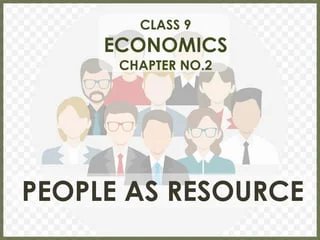Determination of Income and Employment - Class 12
Determination of Income and Employment is a chapter in Class 12 Economics that explores the key factors influencing the level of national income and employment in an economy. It covers topics such as: Aggregate Demand: The total demand for goods and services in an economy. Aggregate Supply: The total supply of goods and services in an economy. Equilibrium: The point at which aggregate demand and aggregate supply are equal. Full Employment: The level of employment at which the economy is operating at its maximum potential. Inflation and Deflation: The causes and consequences of inflation and deflation. Fiscal Policy: The use of government spending and taxation to influence the level of economic activity. Monetary Policy: The use of interest rates and the money supply to influence the level of economic activity. This chapter aims to provide students with a comprehensive understanding of the factors that determine income and employment in an economy and the tools that governments can use to influence these factors. আয় ও কর্মসংস্থান নির্ধারণ দ্বাদশ শ্রেণির অর্থনীতির একটি অধ্যায় যা একটি অর্থনীতিতে জাতীয় আয় এবং কর্মসংস্থানের স্তরকে প্রভাবিত করে এমন মূল কারণগুলি অনুসন্ধান করে। এতে অন্তর্ভুক্ত বিষয়গুলি যেমনঃ সামগ্রিক চাহিদাঃ একটি অর্থনীতিতে পণ্য ও পরিষেবার মোট চাহিদা। সামগ্রিক সরবরাহঃ একটি অর্থনীতিতে পণ্য ও পরিষেবার মোট সরবরাহ। সামঞ্জস্যঃ যে বিন্দুতে সামগ্রিক চাহিদা এবং সামগ্রিক সরবরাহ সমান হয়। পূর্ণ কর্মসংস্থানঃ কর্মসংস্থানের স্তর যেখানে অর্থনীতি তার সর্বোচ্চ সম্ভাবনায় কাজ করছে। মুদ্রাস্ফীতি ও অবক্ষয়ঃ মুদ্রাস্ফীতি ও অবক্ষয়ের কারণ ও পরিণতি। রাজস্ব নীতিঃ অর্থনৈতিক ক্রিয়াকলাপের স্তরকে প্রভাবিত করতে সরকারী ব্যয় এবং করের ব্যবহার। মুদ্রা নীতিঃ সুদের হার এবং অর্থ সরবরাহের ব্যবহার অর্থনৈতিক ক্রিয়াকলাপের স্তরকে প্রভাবিত করে। এই অধ্যায়ের লক্ষ্য হল শিক্ষার্থীদের অর্থনীতিতে আয় ও কর্মসংস্থান নির্ধারণকারী কারণগুলি এবং সরকারগুলি এই কারণগুলিকে প্রভাবিত করতে যে সরঞ্জামগুলি ব্যবহার করতে পারে সেগুলি সম্পর্কে একটি বিস্তৃত ধারণা প্রদান করা।
English
Last updated
Wed, 27-Nov-2024



















